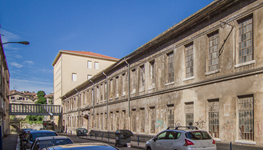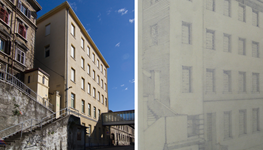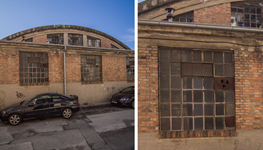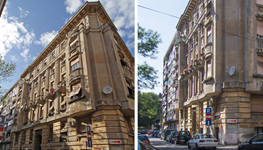Search result

The buildings of Matteo Skull Foundry and Mint
The activities of the mentioned company with the full name of Matteo Skull Foundry and Mint can be traced back to the 1880s. It is interesting that the workers’ apartments were still an integral part of the factory at the time. The factory was expanded and architecturally changed in 1881, then again in 1888 and 1925, when it expanded at the expense of the already collapsed Ružić Tannery. The former tannery’s two-storey factory building was adapted into housing facilities for workers ...

The Ružić Tannery - building
The Ružić Tannery started operating in 1879 and it was located at the very beginning of Vodovodna Street, in the buildings on both sides of the street. The engineer Giacomo Mattich was hired to manage the construction of the factory and working class housing, as well as for the adaptation of Seeman’s house (1881, 1883). Next to the Tannery, on the neighbouring ground but also in Seeman’s property, there was the Skull Factory, located in a two-storey storehouse designed by Santa Pille ...

A tram depot on Školjić
The city got electricity in 1895, and already in 1899, the first tramway was put into operation. The tramline led from the bridge over the Rječina to the Danubius shipyard. The renewal of the tram route and the introduction of a two-lane tram in the 1920s showed just how important the tram route was at the time. To be able to store the new trams appropriately, a tram depot was built at Školjić in 1928. It is a two-storey rectangular building with a façade containing notable, high, ...

The factory of playing cards - building
In the 1880s, the company Modiano started its own cigarette paper and playing cards factory in Trieste and, in 1915, Modiano built a factory for the manufacturing of playing cards in Rijeka. The factory was located in the former Via Goldoni (today Rikarda Katalinića Jeretova Street no. 4), and it was designed by architects, father and son Ambrosini. The plant was in use until 1931, when the production was terminated because a Budapest branch of the company was opened at the time. The facility in ...
